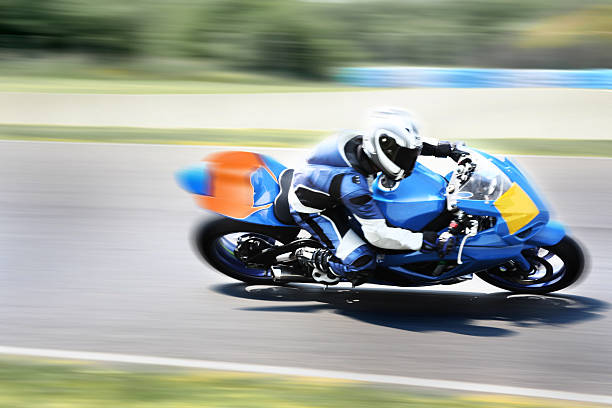Motorcycle Racing and its Impact on Popular Culture
The world of motorcycle racing is not just about speed, competition, and technical prowess; it has also carved a significant niche in popular culture. From its portrayal in movies and literature to influencing fashion trends and lifestyle choices, motorcycle racing has left an indelible mark on society’s collective consciousness. This article explores how motorcycle racing has transcended the racetrack and become an integral part of popular culture.

The Thrill of Speed and Adrenaline
At its core, motorcycle racing is a thrilling spectacle that captivates audiences with its speed and adrenaline-fueled excitement. The roar of engines, the sleek design of racing bikes, and the daring maneuvers of riders create a sensory experience that resonates with enthusiasts and casual viewers alike. The visceral nature of motorcycle racing appeals to our primal instincts, tapping into our fascination with speed and danger.
The thrill of motorcycle racing has been immortalized in numerous movies and documentaries. Films like “On Any Sunday” and “TT3D: Closer to the Edge” offer audiences a glimpse into the lives of racers, the challenges they face, and the rush of competing on the edge. These cinematic portrayals not only entertain but also educate viewers about the dedication, skill, and courage required to excel in this high-stakes sport.
Cultural Icons and Heroes
Motorcycle racing has given rise to a pantheon of cultural icons and heroes who inspire and captivate the imagination. Legendary racers like Valentino Rossi, Giacomo Agostini, and Mike Hailwood are not only celebrated for their achievements on the track but also revered for their charisma and larger-than-life personas. Their stories of triumph and adversity resonate with fans, making them role models for aspiring racers and enthusiasts.
These icons often transcend the confines of the racetrack, becoming symbols of determination, resilience, and the pursuit of excellence. Their influence extends beyond the sport, shaping popular perceptions of what it means to be a racer and a hero.
Influence on Fashion and Style
The aesthetics of motorcycle racing have undeniably influenced fashion and style trends. The sleek designs of racing leathers, helmets, and gear have inspired clothing designers to incorporate elements of racing attire into mainstream fashion. The leather jacket, synonymous with rebellious coolness, was popularized by iconic figures like Marlon Brando in “The Wild One” and has since become a staple in wardrobes around the world.
Moreover, the imagery associated with motorcycle racing—bold graphics, vibrant colors, and edgy designs—has found its way into streetwear and urban fashion. Brands often draw inspiration from the world of racing, merging the allure of speed with the urban sensibility of modern fashion.
Artistic Expression and Creativity
Motorcycle racing has provided a canvas for artistic expression and creativity. The dynamic forms of racing bikes, the intricate details of machinery, and the visually captivating scenes of competition have inspired artists, photographers, and designers to create stunning works that capture the essence of the sport.
Photographers capture the intensity of races, freezing moments of raw emotion and determination. Artists interpret the movement and power of racing through various mediums, from paintings to sculptures. The visual language of motorcycle racing resonates with creatives and offers them a unique subject to explore and reinterpret.
Cultural References in Music and Literature
The world of motorcycle racing has made its mark on the cultural landscape through references in music and literature. Song lyrics often evoke the sense of freedom and adventure associated with riding and racing motorcycles. Tracks like Steppenwolf’s “Born to Be Wild” and The Rolling Stones’ “Ride ‘Em On Down” celebrate the spirit of the open road and the thrill of the ride.
In literature, motorcycle racing has been a backdrop for storytelling, symbolizing freedom, rebellion, and self-discovery. From Hunter S. Thompson’s “Hell’s Angels” to Robert M. Pirsig’s “Zen and the Art of Motorcycle Maintenance,” novels have explored the connections between motorcycles, philosophy, and the human experience.
Global Communities and Camaraderie
Beyond its aesthetic influence, motorcycle racing has fostered a global community built on shared passion and camaraderie. Enthusiasts from different walks of life come together to celebrate their love for the sport, forming friendships that transcend geographical boundaries. Motorcycle racing events, from local races to international championships, serve as gatherings where fans can connect, exchange stories, and revel in their shared enthusiasm.
The culture of motorcycle racing is characterized by a sense of belonging and inclusivity. Riders and fans alike find a sense of identity and belonging within this community, united by their shared appreciation for the sport and its values.
Advertising and Branding
Motorcycle racing’s impact on popular culture extends to advertising and branding as well. Companies often leverage the sport’s appeal to market products and services, associating their brands with the adrenaline, excitement, and rebellious spirit of motorcycle racing. This synergy between brands and the sport has led to iconic sponsorships and partnerships that resonate with consumers.
Motorcycle racing’s influence on advertising goes beyond traditional campaigns. Brands are increasingly embracing digital platforms and social media to connect with audiences, allowing them to engage with motorcycle racing content in new and innovative ways.
Conclusion
Motorcycle racing’s imprint on popular culture is undeniable. From its representation in movies and literature to its influence on fashion, art, and music, motorcycle racing has transcended the realm of sports to become a symbol of freedom, speed, and individuality. As the sport continues to evolve and adapt, its impact on popular culture remains a testament to its enduring significance and ability to inspire generations across the globe.